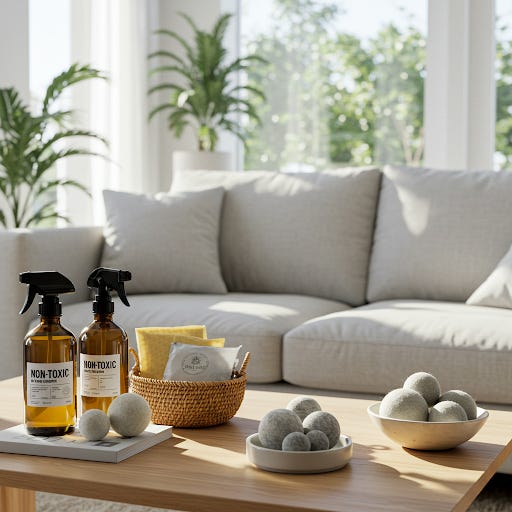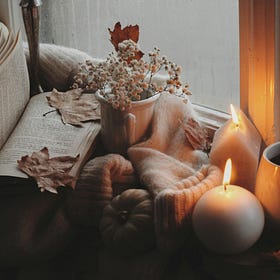What to Remove for a Low-Toxin Lifestyle: Your Home
Easy-to-Follow Lists for Every Area of Your Life
When it came to detoxifying my home, I took a simple approach—I stopped buying toxic products and, as each one ran out, I experimented with DIY alternatives. I still remember grating soap and mixing up a 5-gallon bucket of homemade laundry detergent! (It was quite the adventure. And slightly messy. But hey, progress, not perfection!) Over time, I refined my recipes and streamlined my process. Now, I have an easy, effective method for keeping our clothes clean without all the extra effort. Non-toxic living doesn’t have to be complicated—it’s all about finding what works best for you. (And what doesn’t involve grating soap. Trust me.)
Here are some common household toxins to eliminate:
Chemical Cleaners - Replace harsh, chemical-laden cleaners with natural alternatives like vinegar, baking soda, and essential oils.
Air Fresheners - Many air fresheners release harmful VOCs (volatile organic compounds). Opt for natural alternatives like diffusers with essential oils.
Non-Stick Cookware - Teflon and similar non-stick coatings can release toxic chemicals when heated. Switch to cast iron, stainless steel, or ceramic cookware.
Synthetic Fragrances - These are found in candles, lotions, and perfumes, often containing endocrine-disrupting chemicals. Choose natural or unscented products instead.
Plastic Containers - Plastics, particularly those containing BPA and phthalates, can leach harmful substances into food and drinks. Use glass, stainless steel, or bamboo options.
Cleaning Wipes - Many disposable wipes are filled with toxins and contribute to waste. Opt for reusable cloths and non-toxic cleaning solutions.
Mold and Mildew Cleaners - Some cleaning products designed to kill mold contain harmful chemicals. Try vinegar, tea tree oil, or hydrogen peroxide instead.
Pesticides - Conventional pesticides can harm both you and the environment. Use organic or natural pest control methods.
Toxic Laundry Detergents - Many laundry detergents contain artificial fragrances, dyes, and harsh chemicals. Switch to natural, non-toxic detergents.
Old Paint - Some older paints contain lead, a serious health risk. If renovating, ensure lead-safe practices are followed.
Fluorescent Light Bulbs - These contain mercury, which can be hazardous if broken. LED bulbs are a safer, more energy-efficient option.
Teflon Products - Including cookware, irons, and steamers. Use alternatives that are safer for cooking and home care.
Antibacterial Soap - Many antibacterial soaps contain triclosan, which has been linked to hormone disruption. Stick with regular soap and water.
Synthetic Carpets - Carpets made from synthetic materials can emit VOCs. Opt for wool, cotton, or natural fiber rugs.
Fireplace Logs (Chemical-coated) - Some commercially sold logs are treated with harmful chemicals. Look for untreated, natural logs or consider a safer fire starter option.
Swapping these toxic household items for safer, natural alternatives can make a huge difference in your home’s environment and your health! (And might even impress your in-laws. Just sayin’.)
Love my snarky takes on marriage, parenting, and the chaos of raising an ADHD-fueled family—while still trying to live that crunchy dream? Help keep the laughs rolling, the sourdough rising, and the wellness wisdom flowing. Toss a few bucks my way—because organic sarcasm and real talk deserve a little funding. 😉More to Explore



